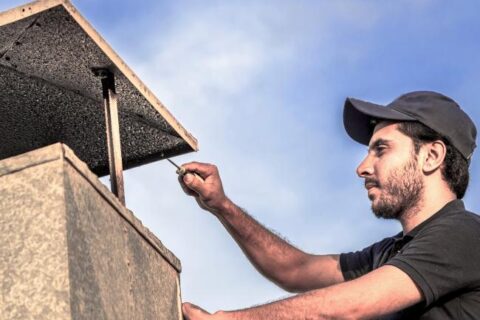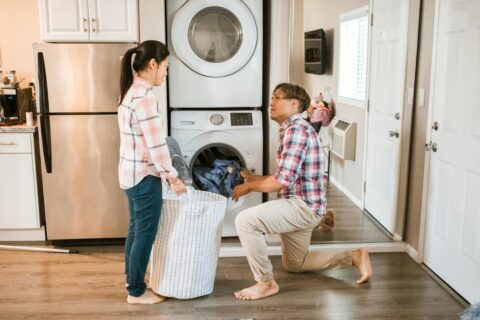What Every Homeowner Should Know About Chimney Relining
If your chimney is the heart of your fireplace system, the chimney liner is the artery that keeps it functioning safely. It’s something most homeowners don’t think about until there’s a problem. In this post, we’ll explain what chimney relining is, why it’s essential for home safety, the warning signs of liner damage, and how ChimneyTEK professionally handles chimney relining.
Whether you use your fireplace every winter or just occasionally, this is a topic that every homeowner in Glen Burnie should understand.
What Is Chimney Relining?
Chimney relining is the process of installing a new liner inside your existing chimney flue. The liner serves three critical purposes:
- Protects your home from heat and combustion byproducts
- Improves fireplace and appliance performance
- Prevents dangerous gases like carbon monoxide from entering your home
Think of it as a safety sleeve that shields your chimney walls and helps toxic smoke and gases exit efficiently.
Why Chimney Liners Are So Important
A damaged or deteriorated chimney liner isn’t just inefficient, it’s dangerous. Here’s why every chimney should have a properly functioning liner:
1. Fire Prevention
Chimney liners contain the intense heat created by wood, gas, or oil-burning appliances. Without one, or with a cracked or damaged liner, this heat can transfer to nearby framing, insulation, or drywall, sparking a fire.
2. Carbon Monoxide Protection
Combustion byproducts, such as carbon monoxide, are colorless, odorless, and deadly. A cracked or improperly sized liner allows gases to leak into your home instead of being vented safely outdoors.
3. Structural Protection
Smoke is acidic, and over time it can eat away at the mortar joints inside your flue. A liner acts as a barrier, protecting your brick and mortar from corrosion, moisture, and chemical breakdown.
Signs Your Chimney May Need Relining
If you’re experiencing any of these issues, it’s time to schedule a chimney inspection:
- Smoke backing up into your home
- Strong, unpleasant odors coming from the fireplace
- Pieces of tile or metal in the firebox (called “shaling”)
- Cracked or missing flue tiles
- A fireplace that burns inefficiently
- Soot or creosote buildup
- Recent chimney fire or flue damage
Even if everything looks fine, age and regular use can still cause wear and tear. That’s why NFPA (National Fire Protection Association) recommends annual chimney inspections.
When Does Chimney Relining Become Necessary?
At ChimneyTEK, we recommend relining when:
- The chimney has no liner at all (common in older homes)
- The existing liner is cracked, broken, or missing tiles
- You’re converting from wood-burning to gas or another fuel type
- A chimney fire has damaged the liner
- The liner is improperly sized for the appliance it serves
- You’re installing a new fireplace insert or stove
A new liner ensures safety, efficiency, and compliance with local and national building codes.
Types of Chimney Liners
There are several types of liners, and the right one depends on your fireplace type, fuel source, and the type of chimney construction.
1. Clay Tile Liners
These are common in older homes and are built in during chimney construction. They’re durable but can crack from heat stress or age.
2. Metal Liners (Stainless Steel)
Stainless steel liners are the gold standard in modern chimney relining. They are durable, corrosion-resistant, and can be custom-fitted for any chimney. They’re ideal for both wood-burning and gas appliances.
3. Cast-In-Place Liners
These are installed as a cement-like slurry and harden into a seamless structure. They’re great for restoring structural integrity in damaged chimneys but are less common due to cost.
At ChimneyTEK, we typically recommend UL-listed stainless steel liners for their reliability, longevity, and ability to improve airflow and safety.
Our Chimney Relining Process at ChimneyTEK
Here’s what homeowners can expect when they hire us for chimney relining:
Step 1: Thorough Inspection
We perform a full chimney inspection using cameras and diagnostic tools to assess the condition of your current liner and flue.
Step 2: Determine the Best Liner Solution
We evaluate your fireplace type, fuel source, chimney size, and overall condition to recommend the best liner material and design.
Step 3: Safe and Precise Installation
We remove any damaged components, install the new liner securely, and seal everything according to industry safety standards.
Step 4: Post-Installation Testing
We test airflow, check connections, and ensure your appliance is working safely and efficiently.
Why Trust ChimneyTEK for Chimney Relining?
- Local experience: We know Glen Burnie homes—inside and out.
- Certified technicians: Our team is trained to the highest standards of the National Fire Protection Association.
- No scare tactics: We provide honest, documented inspections and recommendations.
- Safety-focused: Your family’s well-being is our top priority.
Don’t Wait—Schedule Your Chimney Inspection Today
If your chimney liner is damaged or missing, you’re taking a serious risk every time you light a fire or run your gas appliance. Chimney relining isn’t just a fix—it’s fire prevention.
Protect your home and loved ones with a professional inspection and, if needed, chimney relining from the experts at ChimneyTEK.
Call now or schedule online to book your chimney relining evaluation in Glen Burnie and beyond.


